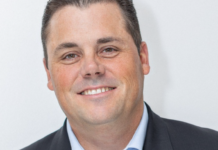PERSON OF THE WEEK: When it comes to the potential for regulatory rollback under the Trump administration, there are myriad possibilities. But, should the administration succeed in rolling back some or all of the onerous mortgage regulations put in place since the economic crisis, would it necessarily result in lenders discarding all of their new risk management measures – measures that have led to the lowest default rates and the best loan performance seen in over a decade? Would quality control (QC) take a back seat to product innovation as lenders relax their credit standards in an effort to go after the “underserved” market? Would lenders “rip and replace” their processes and systems and return to the days of the “Wild, Wild West”?
Not likely, says Michael Vitali, chief compliance officer for LoanLogics, who tells MortgageOrb that even though federal regulations might get rolled back under Trump, there remains a slew of agency and state requirements that will likely remain intact.
In addition, he cautions lenders not to let their guard down during this critical transition period, as the regulations established under Dodd-Frank and the Consumer Financial Protection Bureau (CFPB) are still in full force.
Vitali, who supports the compliance analysts at LoanLogics on a daily basis by reviewing and approving the scope and substance of compliance reviews; answering loan-level questions; and participating in the preparation for, and defense of, regulatory exams, took some time out from his busy schedule to answer the critical question: “Where is mortgage QC headed from here?”
Q: Has QC improved since the financial crisis and creation of the CFPB and the threat of fines for noncompliance with the regulations? Can you quantify it?
Vitali: I believe so. Lenders are now required to ensure their loans meet not only all legal requirements, but also agency and investor requirements. More lenders are seeing that an investment in loan quality pays off in big returns in the long run – in improved processing and closing turn times, fewer loan delivery suspensions, quicker loan fundings, and reduced requests for loan repurchases and indemnifications. All of that results in better customer service and bigger profits.
Q: What are the biggest or most common QC issues you still see in the mortgage business?
Vitali: There still exists confusion about some of the TILA-RESPA Integrated Disclosure (TRID) rules surrounding lender credits and the disclosure of construction-to-permanent loans. The rules are a little ambiguous on the lender credits, as these are set once a lender locks the loan. To be safe, for the most part, once the loan is locked and a lender credit disclosed, it should not be decreased. Regarding construction-to-permanent loans, in which a loan to construct a home converts to permanent financing once the home is built, lenders have the option of disclosing it as two separate transactions or as a single transaction. Lenders making these loans should review the CFPB’s guidance. Both of these issues are being addressed in the pending TRID updates issued by the CFPB (TRID 2.0).
Q: Do you still see companies that don’t take compliance seriously? Is it due to a lack of money or manpower, or do they simply not care? How many companies are we talking about?
Vitali: I think everyone at this point takes compliance seriously. What many small lenders and banks continue to struggle with is how to do it cost-effectively. Investments in technology and elevating the amount of automation associated with a compliant quality assurance program can improve productivity and reduce the burden on audit staff, whether through outsourcing or doing this work in-house.
One thing is for sure: As more and more lenders are fined and incur losses resulting from poor-quality loans, more lenders and banks become cognizant of the need for a complete, accurate and compliant QC program.
Q: Are lenders starting to relax under the assumption that the Trump administration will try to disband the CFPB or at least cut back on what it does? What do you advise them, if they do think that?
Vitali: Some may relax, but that would be a mistake. It appears that the CFPB and its current director may not be going away anytime soon. Just recently, a memorandum issued by Dominic Mancini, the acting administrator of the Office of Information and Regulatory Affairs, advised that President Trump’s Executive Order to restrict regulations did not apply to the CFPB and the other federal agencies that regulate financial services, meaning they may continue to update existing rules and implement new regulations.
I strongly recommend that mortgage lenders be very careful to comply with all of the existing rules, become actively involved in any new rulemaking, and prepare for upcoming Home Mortgage Disclosure Act changes due to take effect in 2018. We’ve come too far to relax now.
Q: Outside of CFPB fines and penalties, are there other penalties originators face for originating noncompliant loans?
Vitali: The biggest fines have come about as the result of U.S. Department of Justice (DOJ) actions brought under the False Claims Act. These are mostly the result of deficiencies found in the lender’s loans and processes – which result in loss or potential loss to the Federal Housing Administration (FHA). Other actions are brought directly by the U.S. Department of Housing and Urban Development (HUD) against lenders that certify their FHA loans meet all FHA requirements but may have a slip-up somewhere along the way.
Once defects are uncovered on a few loans, the investigations move deeper into the lender’s origination practices and into the loans they have already originated and closed, including loans closed several years ago, not just the lender’s current originations. That can be a very expensive and time-consuming exercise.
Another thing to keep in mind is the Whistleblower Protection Act. This act, passed in 1989, provides protection to individuals who report what they reasonably believe to be a violation of law, gross misconduct, a waste of taxpayer funds, or a danger to the public safety. This has been interpreted to include someone who reports a lending institution for violations when making a federally insured mortgage loan.
This means that any lender employee who believes the lender may be doing something that is not in full compliance with the lending laws and/or FHA requirements and regulations may report his or her employer to the DOJ for investigation. If the lender is found to be not in compliance and is fined by, or settles with, the DOJ, the whistleblower receives a percentage of the fine or settlement.
One more thing to keep in mind is that once an investigation is begun by the CFPB, DOJ or HUD, usually other regulatory agencies join in with their own investigations, as well.
Q: What is the best solution for lenders to improve their QC – building their own systems or buying an off-the-shelf software system? Does the size of the company matter in which solution they choose?
Vitali: Today, lenders performing their own QC in-house do it through some type of manual process using checklists and spreadsheet reporting. This can be time-consuming and inefficient for even the smallest lenders. Building an automated QC platform from scratch would be quite costly and require additional programming and IT resources. The best bet, then, is for lenders and banks to explore existing QC platforms to perform these audit services in-house, which requires minimal staff and IT resources.
Why reinvent the wheel when one already exists? Most platforms, such as the one offered by our firm, can be modified to suit the specific needs and wants of the user. Advanced automation and a rules engine, driven by deep expertise in the rules and regulations, which is my responsibility, can significantly reduce manual tasks and increase loans per person per day throughout.
As an alternative, the entire QC process, for pre- and post-close reviews, as well as for investor pre-delivery or funding reviews, can be outsourced to experienced vendors that specialize in such services. LoanLogics has many clients that prefer this strategy. In doing so, a bank or lender may match its variable costs for QC to its variable income, depending on monthly production volume.
Q: Is QC best addressed at the beginning of the loan process, at the end, somewhere in between or throughout? Why?
Vitali: Loan quality and QC are two different things. Lenders should have in place checkpoints throughout their lending processes to ensure the manufacture of quality loans. The QC process is then performed to ensure that those tasks are being done for all loans by all employees all the time.
As an example, systems should be in place to ensure that an originator takes and submits a complete loan application. This can be done by programming the entry of the required fields before an employee can move on to the next step in the application process. This process can be automated. This way, the lender can track and ensure compliance with the rules every step of the way for every new application taken. This is the foundation for a quality loan. The pre- and post-close QC process is then done as a careful review of a sampling of loans originated each month to ensure that what needs to get done is being done the way it should be done – on time, every time, by all employees and by service providers.













